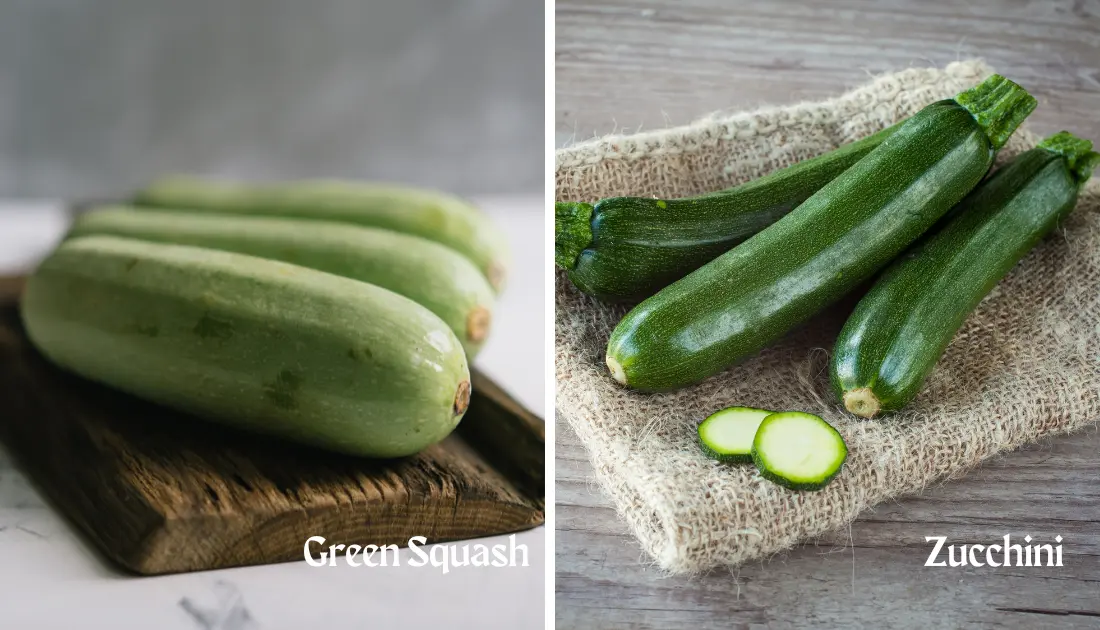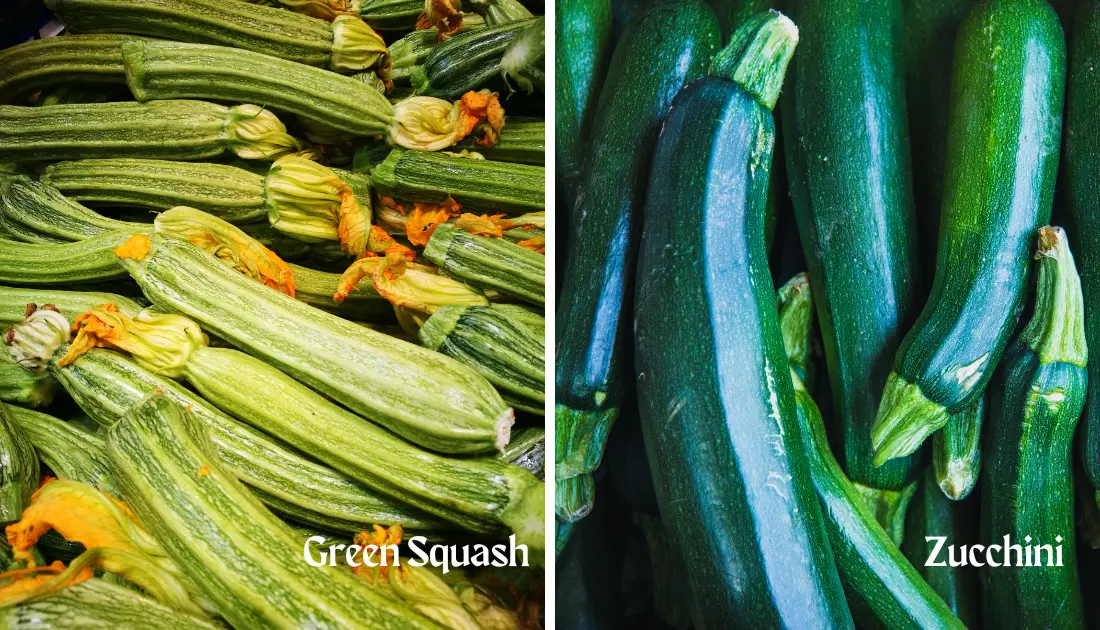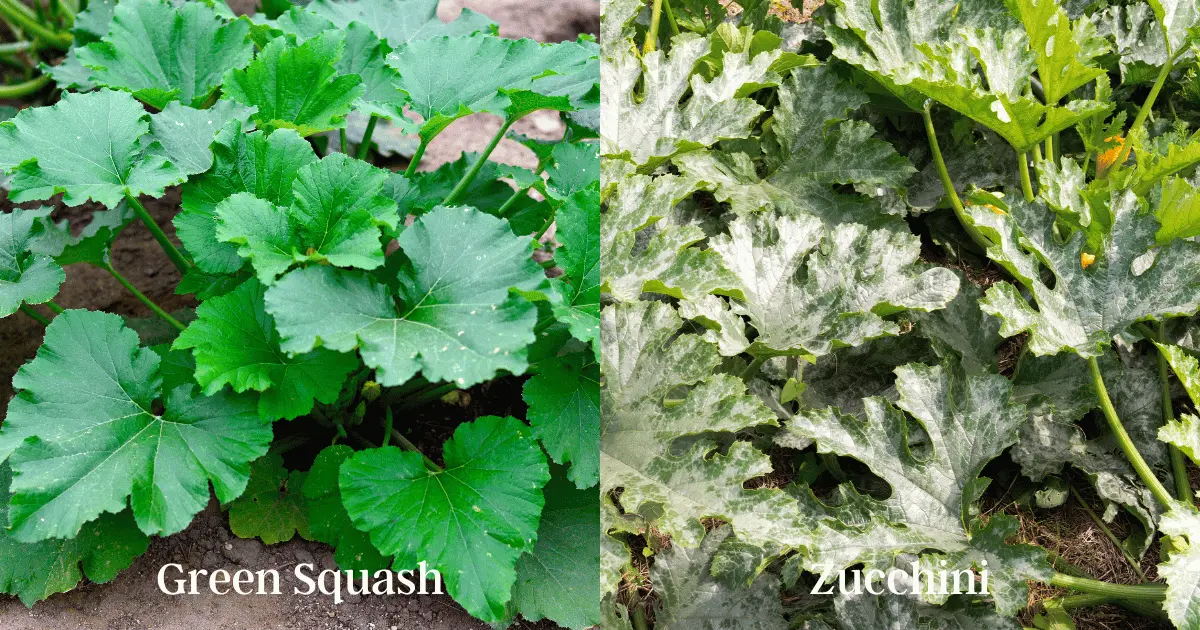Green Squash and Zucchini are often used interchangeably and are similar in flavor and texture, making it difficult to know if there’s a difference between both plants.
Green Squash vs. Zucchini

Squashes are one of the oldest known crops, about 10,000 years by some estimates of sites in Mexico. They are a group of edible plants that are part of the Cucurbitaceae family. This family, in particular, splits into two sections- winter squashes and summer squashes.
However, their main differences are their harvest times and growing nature. Reports suggest that squash may have first been cultivated in Mesoamerica 8000 to 10000 years ago but have been independently cultivated elsewhere.
Zucchini (Cucurbita pepo) is a green summer squash. Most people refer to more than one of these squashes as Zucchini or Zucchinis.
Zucchini originates in Mesoamerica, a part of North America, extending through Belize, Guatemala, El Salvador, Honduras, Nicaragua, and Northern Costa Rica. It is one of many vegetables and fruits native to North and South America and was introduced into the ‘Old World’s cuisine after Columbus’ voyage in 1492.
Green Squash vs. Zucchini Comparison Chart
| Green Squash | Zucchini | |
| Botanical name | Cucurbita pepo | Cucurbita pepo |
| Family | Cucurbitaceae | Cucurbitaceae |
| Plant type | Fruit, annual | Fruit, annual |
| Size | 10-12 inches in length | 1 m (3ft) inches in length |
| Sun exposure | Full sun | Full sun |
| Soil type | Fertile, well-drained soil | Loamy, sandy, moist but well-drained soil |
| Soil pH | Slightly acidic between 6.0 and 6.5 | Acidic, neutral |
| Bloom time | Summer | Summer |
| Hardiness zones | Zone 3-10 | Zones 3-9 |
| Native area | North America | America and Mexico |
Appearance

Though they are members of the same family, the appearance of both vegetables sets them apart. All zucchinis are squash, but not all squash are zucchinis. As mentioned above, squash is divided into winter and summer squash.
The winter types- butternut, acorn, and spaghetti squash are physically hard, with inedible outer skins and very tough seeds. In contrast, the summer squash has a large bottom end and a tapered neck.
On the other hand, Zucchini are typically dark green and sometimes have long stripes running along their length.
Both plants look like eggplant and are often compared to it as well. Another way to tell the difference between both vegetables is their leaves, which have slightly different textures.
All squashes have large green leaves, but many varieties have different shapes and textures. In contrast, zucchini plants have big, indented, and jagged leaves.
Growing Conditions

The growing conditions of both vegetables are very similar, and they also have similar care requirements and sometimes face the same problems.
Climate
Depending on the variety, green squash thrives in climates under USDA zones 3-10, while Zucchini thrives within the normal 3-9 range. Both vegetables thrive in warm conditions with temperatures between 65F and 75F. Green squash can tolerate high humidity levels, but persistent wet humidity can lead to the growth of fungal diseases.
Sunlight
Green squash thrives in full sun with at least six to eight hours of direct sunlight daily to produce fruits, and this decreases the chances of diseases such as powdery mildew from taking hold. Zucchini also thrives best in full sun (at least 6 to 8 hours) and can survive in partial shade or even bright indirect light. While it’s possible to grow this vegetable anywhere, it is best grown in a bright, warm, and dry environment.
Soil and Fertilizer
Green squash is susceptible to root rot and other fungal diseases, so its soil must be well-drained to prevent damage to the plant’s roots, fruits, and foliage. Zucchinis thrive best in well-drained soil enriched with plenty of compost. However, they will grow in many soil types with a pH of 6.0 to 7.5 but prefer their soil to have plenty of broken-down compost and manure.
Both vegetables are hungry plants, needing a squash-friendly fertilizer frequently, especially during the fruiting season. For best results, use a balanced fertilizer once a month and avoid nitrogen-rich fertilizers, as these encourage foliage growth over the growth of flowers and fruits.
Watering
The watering requirements of both vegetables are the same as they have high water requirements, and bad watering habits can create room for diseases and pests. Therefore, it’s best to water both vegetables deeply in the morning.
This allows the water to reach the deeper parts of the soil, avoiding any excess water that can evaporate during the day. You can also add a layer of mulch to keep the roots cool during heat periods and to help the soil retain as much moisture as possible.
Common Pests and Diseases
Green squash is susceptible to fungal diseases like powdery mildew and rot. With the right gardening habits and conditions, these pests will be easy to prevent. However, other serious diseases, such as the Zucchini yellow mosaic virus, can destroy your plants.
When infected, the virus causes a yellow pattern on the plant’s large leaves resulting in stunted and deformed leaves. Unfortunately, there is no cure for this particular disease. Zucchini also attracts cucumber beetles, whiteflies, and spider mites.
Most of these pests can be prevented using natural methods such as companion planting and introducing natural predators into your garden. It can also be prevented by using horticultural sprays.
